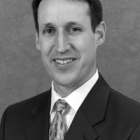If you're feeling whiplash from the economic data coming out of Washington this week, you're not alone. Fourth quarter economic growth came in much lower than expected and productivity experienced an outright decline. Yet today's Employment Situation report from the Labor Department points sharply in the opposite direction. Positive details ran deep, as the headline numbers reflect: the unemployment rate dropped to 4.7 percent and payroll jobs surged ahead by nearly 200,000. This comes on top of major upward revisions to the last 2 months' figures. It now appears that the 4th quarter slowdown in growth was a one-time setback from Hurricane Katrina and that the economy has moved beyond it.
Policy Implications
The strong employment data at the start of 2006 likely will have three implications for policy. First, the Federal Reserve is likely to continue to increase interest rates in the months ahead, building on the final rate increase of former Fed chairman Alan Greenspan this week. Second, rising labor costs are pushing up inflation and will have broad effects, on everything from medical policy to union negotiations. Third, an interesting change in the tone of economic policy debates may be coming. Conservatives will continue to cite the strong economy as vindication of the President's tax cuts, while liberals may finally be forced to change their pessimistic tune. Look for liberals to start arguing that the primary cause of the good times is the massive increase in federal spending since 2001, not the tax cuts.
Highlights
- The unemployment rate dropped sharply to 4.7 percent, its lowest rate in years.
- The unemployment rate for African Americans dropped to 8.9 percent, a decline of nearly 2 points in 2 months.
- The Labor Department released its annual revisions to payroll data this month. The revised data displays a pattern of slower payroll job growth in the first half of 2005, followed by much stronger growth over the past 5 months than previously reported. Some economists might interpret this fast-paced job growth as nascent overheating of the economy.
A Closer look at Women and Work
By the numbers, fewer women and teenagers want to work these days, compared to the peak years before 9/11, and this is a mystery to many economists. The "dropout puzzle" argument, as Paul Krugman called it in a July 2005 column, implies that unemployment would be 1 to 3 percentage points higher if these so-called "dropouts" were counted as part of the labor force. Set aside the crude assumption that dropouts would all be unemployed if they actually wanted to work. The real lesson of lower participation rates is philosophical, not economic.
Able workers who choose not to work are one consequence of a free society. Armchair social planners might like to imagine a world in which they could force mothers of young children back to the factory floor for the greater good, force early retirees off the golf course, or force young women out of community colleges and into the office, but surely this is a better world because individuals can decide for themselves whether to work.
Krugman and his friends say that the dropouts are discouraged, but the dropouts don't describe themselves that way. We know this because the Department of Labor asks non-workers why they aren't working. One of the reasons is discouragement. Yet there are fewer discouraged workers today than there were in the mid 1990s, and the discouragement rate has declined sharply over the last three years. Today Kathleen Utgoff, commissioner of the Bureau of Labor Statistics, announced that "The number of discouraged workers fell over the year to 396,000," down from 515,000 one year ago.
Still, pessimists argue that we're seeing an aftershock of the 2001 recession, which was artificially mild because of monetary and fiscal policy but which lingers beneath the surface of the economy. We cannot rule out that theory, although it seems unlikely that survey respondents are lying about their discouragement more than in any previous year. A second theory is that the drop may be secular; as evidence, the drop in teens' participation is three times larger than during any other recession on record. The 9/11 attacks may be a cause.
A third theory, recently suggested by Diana Furchtgott-Roth, former Chief Economist of the Labor Department, begins with this observation: female participation rates peaked in 1999 and declined from that point forward, long before the recession and long before the war on terrorism.
A recent article in the Pioneer Press, one of Minnesota's top newspapers, tells the human side of this story and supports Furchtgott-Roth's theory. Minnesota is a closely watched because it had the highest labor participation rates of any state for many years. Jodi Eiesland, a consultant profiled in the article, shifted to part-time work after her first son was born and then exited the workforce after her second. In our prosperous economy, many women face this choice and many are choosing to care for their families. That some should use these choices as evidence of economic softness is particularly ironic.
Tim Kane, Ph.D., is the Bradley Research Fellow in Labor Policy in the Center for Data Analysis at The Heritage Foundation.



